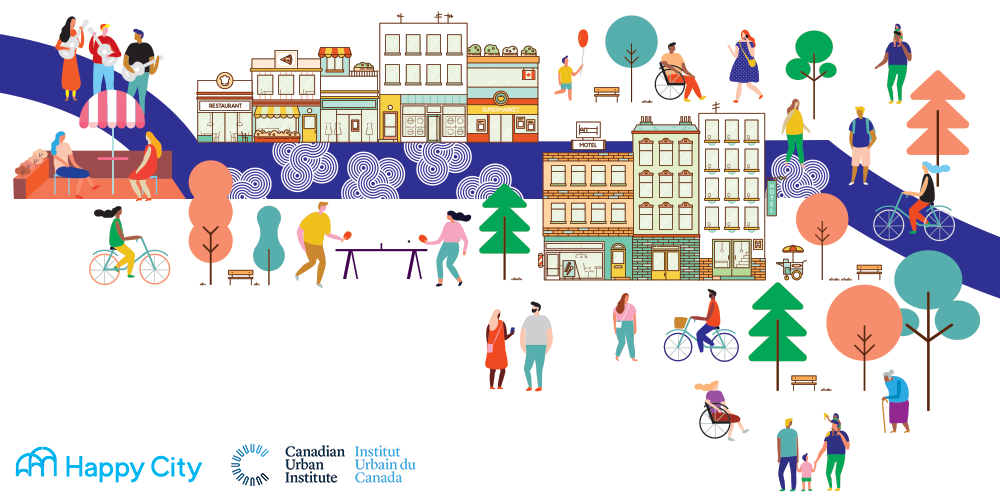COVID-19 has threatened the health of many of Canadian’s most cherished Main Street areas. Cities across the country are taking action through temporary changes to streets and sidewalks. But if we want to make local commercial areas safer, stronger and more inclusive over the long run, we need to include everyone in the process.
News
New toolkit for reviving Canada’s Main Streets calls on cities to include everyone in the process

August 18, 2020 – COVID-19 has threatened the health of many of Canadian’s most cherished Main Street areas. Cities across the country are taking action through temporary changes to streets and sidewalks. But if we want to make local commercial areas safer, stronger and more inclusive over the long run, we need to include everyone in the process.
That’s one key lesson from Rapid Placemaking to Bring Back Main Street, a new toolkit from the Canadian Urban Institute and Happy City. The toolkit offers advice and evidence for anyone working to revive Main Streets and core spaces in big cities, suburbs and small towns.
“The health of our main streets is linked to the health of our cities and our sense of community and well-being”, said Mary Rowe, president and CEO of the Canadian Urban Institute. “Our colleagues at Happy City have created this toolkit for communities to bring people back to main street in safe, healthy, and equitable ways to promote connection and boost local economies.”
The pandemic hit local businesses hard. But it also deepened inequalities in our communities. Cities that rush to transform their Main Streets without meaningfully involving all stakeholders risk deepening those inequities: Neighbourhoods with affluent (often mostly-white) residents end up receiving more benefits, while marginalized neighbourhoods, with a higher share of residents who are Black, Indigenous or people of colour, are ignored, explained report co-author Mitchell Reardon.
“This toolkit was created to go beyond eye-catching design, to help establish rapid placemaking processes that support engagement, inclusion and co-creation among the many people you’ll find on Main Streets across Canada,” said Reardon, Urban Planning and Design Lead at Happy City. “Getting this right is critical to a just pandemic recovery.”
By providing examples of programming and interventions, as well an inclusive process for rapid placemaking, the toolkit can be used by residents, community groups, BIAs/BIDs, and city staff to support local businesses and community.
The toolkit is part of the Bring Back Main Street project, a nationally– coordinated research and advocacy campaign committed to finding the best solutions to ensure our Main Streets recover from COVID–19 and emerge from the crisis more resilient than ever. It was developed in the public interest by the Canadian Urban Institute, with the support of BIAs/ BIDs, city–makers and researchers from across the country.
Read the report here.
For more information, please contact:
Mitchell Reardon, Happy City:
mitchell@thehappycity.com
(778) 990-6663
Juan Luis Garrido, Canadian Urban Institute:
jgarrido@canurb.org
(416) 702-3425
About us
About us
CUI is Canada’s Urban Institute. We are the national platform that houses the best in Canadian city-building – where policymakers, urban professionals, civic and business leaders, community activists and academics can learn, share and collaborate with one another from coast to coast to coast.
Happy City is a consulting group that helps build health and happiness into neighborhoods and cities by illuminating the intersection between urban design and wellbeing. Using master planning, design studios, urban experiments, unique engagement events and consultation, we draw on over a decade of research in psychology, neuroscience, public health and behavioral economics to help developers, planners, governments, non-governmental organizations and citizens understand happy design.
